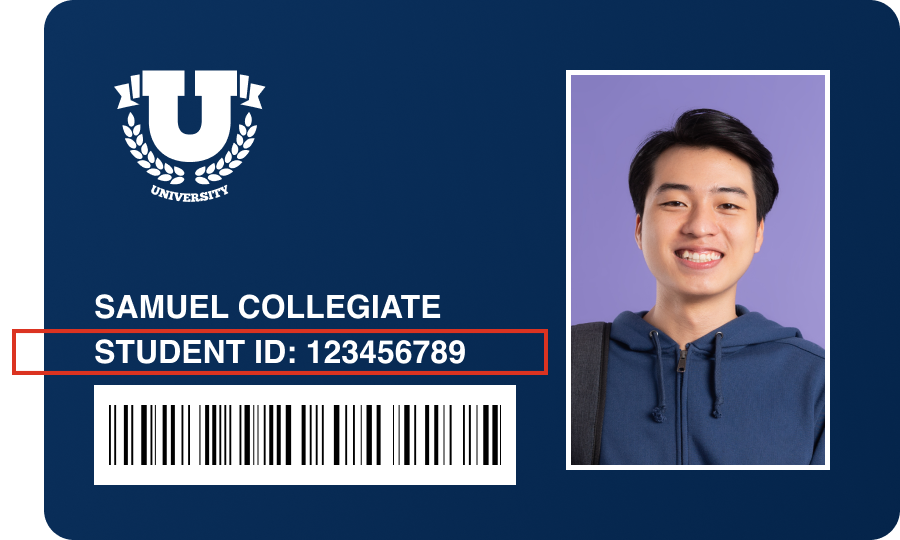Navigating the complexities of healthcare as a student can be daunting. Aetna Student Health offers a range of plans designed to address the specific needs of students, providing accessible and affordable coverage. This comprehensive guide dives into the details, exploring various aspects from coverage options to enrollment processes and financial considerations.
From medical and dental care to vision and mental wellness, Aetna Student Health plans provide essential support for students’ overall well-being. This overview will provide a clear understanding of the different plan options and their associated costs, making the decision-making process easier.
Overview of Aetna Student Health
Aetna Student Health provides comprehensive health insurance solutions specifically designed for the unique needs of students. This coverage addresses the specific health concerns and financial realities of students, from managing everyday health needs to navigating unexpected medical expenses. The plans offer flexible options, allowing students to tailor coverage to their individual requirements.
Purpose and Target Audience
Aetna Student Health is designed to offer affordable and accessible health insurance to students of all ages, from high school to post-graduate levels. The plans are geared towards those who may not have access to employer-sponsored insurance or other traditional coverage options. It aims to ensure students have the necessary healthcare support during their critical educational years.
Key Features and Benefits
Aetna Student Health plans offer a range of features tailored to the student experience. These include convenient online portals for managing accounts, claims, and scheduling appointments. Preventive care is emphasized through discounted or free access to wellness programs and health screenings. Plans often include coverage for routine checkups, vaccinations, and emergency care. Financial assistance programs, like those for co-pays or deductibles, might be included to alleviate financial burdens.
This comprehensive approach aims to support students in maintaining good health and managing healthcare costs effectively.
Coverage Options
Aetna Student Health offers various coverage options to meet diverse needs. These plans commonly include medical, dental, and vision benefits. Medical coverage typically includes inpatient and outpatient care, emergency services, and prescription drugs. Dental coverage often includes preventative care, cleanings, and fillings. Vision coverage may cover routine eye exams and corrective lenses.
Students can often choose a plan that best suits their individual healthcare requirements.
Enrollment Process and Eligibility Requirements
The enrollment process for Aetna Student Health plans is generally straightforward. Students typically need to meet specific eligibility criteria, such as being enrolled in a recognized educational institution and maintaining a certain level of academic standing. Detailed information regarding enrollment timelines, application procedures, and the specific eligibility criteria are usually provided on the Aetna Student Health website.
Common Misconceptions
A common misconception is that Aetna Student Health plans are only for students with pre-existing conditions. Many plans cover pre-existing conditions, though specific terms and conditions may apply. Another misconception is that coverage is limited. In fact, the range of coverage options and benefits can be extensive. It’s essential to review the specific plan details to understand the complete coverage.
Further, students may believe the enrollment process is complex, however, the process is generally streamlined and designed to be convenient.
Comparison with Other Student Health Plans
Choosing the right student health insurance plan can significantly impact your well-being and financial stability during your academic journey. Understanding how Aetna Student Health stacks up against competitors is crucial for making an informed decision. A comprehensive comparison helps you evaluate coverage, costs, and features to select the plan that best aligns with your needs and budget.
Key Similarities and Differences
Aetna Student Health, like many other student health plans, typically offers essential coverage for medical emergencies, routine checkups, and prescription medications. However, the specific details of coverage, deductibles, and out-of-pocket maximums can vary considerably between providers. Some plans might emphasize preventive care, while others prioritize comprehensive emergency coverage. The level of coverage for mental health services and telehealth visits also differs significantly across plans.
Strengths of Aetna Student Health Plans
Aetna Student Health often features a robust network of providers, potentially simplifying access to care. Their plans frequently include options for managing healthcare costs through various tools, such as online portals and cost estimators. Specific plan benefits, such as extended coverage for pre-existing conditions, might also present advantages.
Weaknesses of Aetna Student Health Plans
Certain Aetna Student Health plans may have higher premiums compared to other options, although this is not always the case. Coverage limitations for specific procedures or specialist consultations may also exist. It is crucial to thoroughly review the fine print and compare specific plan details.
Factors to Consider When Choosing a Student Health Plan
Several factors influence the optimal choice for a student health plan. Your financial situation, healthcare needs, and the availability of affordable care options within your geographic area should all be considered. The extent of coverage for mental health and preventative care is also important. Additionally, the ease of using the plan’s administrative tools, such as online portals, can impact your overall experience.
Comparison Table
| Feature | Aetna Student Health | Example Competitor 1 | Example Competitor 2 |
|---|---|---|---|
| Premium Cost (Estimated) | $XX per month | $YY per month | $ZZ per month |
| Deductible | $XXX | $YYY | $ZZZ |
| Out-of-Pocket Maximum | $NNNN | $MMMM | $LLLL |
| Coverage for Mental Health Services | [Description of Coverage] | [Description of Coverage] | [Description of Coverage] |
| Coverage for Preventative Care | [Description of Coverage] | [Description of Coverage] | [Description of Coverage] |
| Prescription Drug Coverage | [Description of Coverage] | [Description of Coverage] | [Description of Coverage] |
| Network of Providers | [Description of Network] | [Description of Network] | [Description of Network] |
Note: XX, YY, ZZ, etc. represent hypothetical costs. Actual costs and coverage details vary by plan and location. Always consult the specific plan documents for accurate information.
Coverage Details and Benefits

Aetna Student Health plans offer comprehensive medical, dental, and vision coverage tailored to meet the specific needs of students. These plans are designed to provide affordable access to essential healthcare services, ensuring students can maintain their well-being while pursuing their education.Understanding the specific coverage details, benefits, and associated costs is crucial for making informed decisions about your healthcare needs.
This section details the specifics of medical, dental, and vision coverage, outlining covered services, costs, and mental health provisions.
Medical Coverage
Aetna Student Health plans generally cover a wide range of medical services, including routine checkups, preventative care, and treatment for illnesses and injuries. Crucially, these plans often include coverage for emergency room visits, hospitalizations, and surgeries. Coverage for specialist consultations, diagnostic tests, and physical therapy is also typically included, contingent on plan specifics.
- Covered Services: Routine checkups, vaccinations, screenings (e.g., mammograms, colonoscopies), treatment of common illnesses (colds, flu), injuries, and emergency care.
- Examples of Covered Procedures: Broken bone treatment, appendectomy, and treatment for chronic conditions like asthma or diabetes.
- Out-of-Pocket Costs: Out-of-pocket expenses depend on the specific plan selected. These costs may include deductibles, co-pays for doctor visits, and coinsurance for certain procedures. Specific details are available in the plan documents. For example, a deductible might be $500 per family member, and co-pays for primary care visits could range from $25-$50.
Dental Coverage
Dental coverage typically includes preventive care, such as cleanings and checkups, as well as treatment for cavities and other dental issues. Important aspects include the coverage for fillings, extractions, and more complex procedures.
- Covered Services: Routine cleanings, checkups, fillings, extractions, and certain orthodontic treatments (limitations may apply).
- Examples of Covered Procedures: Cleaning, check-up, basic fillings, and some extractions. Major dental work, such as root canals, crowns, or extensive bridges, may have higher co-pays or require meeting a deductible.
- Out-of-Pocket Costs: Similar to medical coverage, out-of-pocket costs vary by plan and may include deductibles, co-pays for visits, and coinsurance for certain procedures.
Vision Coverage
Vision coverage generally includes routine eye exams, glasses, and contact lenses. This coverage can include frames, lenses, and contact lenses, often with specific limits.
- Covered Services: Routine eye exams, eyeglasses, and contact lenses. Some plans may cover exams and glasses more frequently than others. Specific plan details Artikel coverage limits and restrictions.
- Examples of Covered Procedures: Eye exams, prescription glasses, and contact lenses. More complex procedures or expensive eyewear may require meeting a deductible.
- Out-of-Pocket Costs: Out-of-pocket costs vary by plan and may include co-pays for eye exams and a portion of the cost for glasses or contacts.
Prescription Drug Coverage
Prescription drug coverage is an essential part of student health plans. Coverage details vary by plan and can involve a formulary of approved drugs, tiered co-pays, and maximum out-of-pocket expenses.
- Formulary: A list of covered prescription drugs. Drugs not on the formulary may not be fully or partially covered. This formulary is important to understand when filling prescriptions.
- Co-pays: Co-pays for prescription drugs often vary based on the drug’s tier on the formulary. Generic drugs typically have lower co-pays than brand-name drugs.
- Maximum Out-of-Pocket Costs: Maximum out-of-pocket expenses for prescription drugs help control overall costs. These limits differ by plan and can influence the cost of medications.
Mental Health and Wellness Benefits
Mental health and wellness are crucial aspects of overall well-being. Many Aetna Student Health plans offer comprehensive mental health services, including access to therapists and counselors.
- Coverage: Many plans include coverage for mental health services, such as counseling and therapy sessions. The specifics of coverage will vary by plan.
- Wellness Resources: Some plans may offer access to online resources or workshops to support students’ overall well-being.
Enrollment and Administration

Navigating your student health plan effectively involves understanding the enrollment process, claims procedures, provider access, payment options, and online portal functionalities. This section details these key aspects of the Aetna Student Health plan, empowering you to manage your healthcare efficiently.
Enrollment Process
The enrollment process typically involves submitting the required forms, providing necessary documentation, and confirming your eligibility. Students usually need to complete an online application or a paper form, which may be available on the university’s website or the Aetna Student Health portal. Important documents may include student identification, proof of enrollment, and any pre-existing medical conditions.
Claims Process
Submitting claims efficiently is crucial for receiving reimbursements. Aetna Student Health utilizes a standardized claims process. Claims can often be submitted electronically through a secure online portal, reducing the risk of errors. Paper claims may also be accepted in some cases. You should carefully review the instructions provided in the plan documents and refer to the online portal for details on specific claim forms and requirements.
Detailed information about the specific claims process, including required documentation and deadlines, is available in the plan documents.
Healthcare Provider Access
Aetna Student Health plans typically provide a network of healthcare providers. These providers are contracted with Aetna, meaning that your care is often more cost-effective within this network. Students can often access a provider directory online or through the plan’s mobile application, allowing them to search for providers based on location, specialty, or other criteria. The provider network details are available in the plan documents.
Payment and Account Management
Managing your account and making payments for healthcare services is a key aspect of enrollment. Aetna Student Health offers various payment options, such as online payment portals or bill pay services. Students may also have the option to set up automatic payments or receive reminders regarding outstanding balances. Detailed information on payment options, due dates, and payment processing fees is provided in the plan documents.
Online Portal Functionality
The online portal is a crucial tool for managing your Aetna Student Health plan. The portal allows students to access their account information, view claims status, download receipts, and manage their payments. This feature streamlines the entire healthcare experience and makes it easier to keep track of your plan’s details. Detailed instructions on utilizing the online portal are typically provided in the plan documents or through user guides on the Aetna Student Health website.
Financial Aspects

Understanding the financial implications of student health insurance is crucial for responsible budgeting and informed decision-making. Aetna Student Health plans offer various options, each with distinct price points and associated benefits. Careful consideration of premiums, financial aid, and payment methods can help students manage these costs effectively.
Typical Costs and Premiums
Student health insurance premiums are influenced by several factors, including the chosen plan, coverage level, and the student’s location. A comprehensive plan with a wider range of benefits often carries a higher premium. Factors such as the geographic location of the university or college and the student’s specific needs can also affect the cost. For example, a student living in a metropolitan area with higher healthcare costs may expect to pay a higher premium compared to a student in a rural area.
Similarly, a plan covering emergency medical care and hospitalizations will typically have a higher premium than a plan covering only routine checkups.
Plan Comparison Table
This table provides a general comparison of different plan options and their associated costs. Note that specific costs can vary based on the individual student’s circumstances.
| Plan Name | Premium (Estimated Monthly) | Key Benefits |
|---|---|---|
| Essential Plan | $50 – $100 | Covers routine checkups, immunizations, and some prescription drugs. |
| Comprehensive Plan | $100 – $150 | Includes all benefits of the Essential Plan plus more extensive coverage for hospitalizations, emergency care, and specialist visits. |
| Elite Plan | $150 – $200 | Offers the most comprehensive coverage, including a higher out-of-pocket maximum, and often includes a wider network of providers. |
Financial Aid and Assistance Programs
Many students face financial challenges, and Aetna Student Health recognizes this. To help alleviate the burden, they offer various financial aid and assistance programs. These programs are designed to make healthcare accessible to all students, regardless of their financial situation. Examples include scholarships, payment plans, and discounts for students who demonstrate financial need. Contacting Aetna Student Health directly to inquire about specific eligibility criteria is recommended.
Budgeting for Student Health Insurance
Budgeting for student health insurance should be approached strategically. Include the monthly premium as a fixed expense in your personal budget. Consider the potential costs of unexpected medical events and set aside a contingency fund for these situations. This contingency fund will provide a financial buffer for unforeseen circumstances and unexpected medical expenses. Additionally, consider the cost of prescriptions and other healthcare needs.
Payment Methods
Aetna Student Health accepts a variety of payment methods, including:
- Credit and debit cards
- Electronic bank transfers
- Checks
- Cash (in limited circumstances)
These options provide students with flexibility in how they pay their premiums. The specific payment methods available may vary depending on the individual student’s circumstances. Students should refer to the official Aetna Student Health website or contact their representatives for a comprehensive list of accepted payment options.
Customer Service and Support
Aetna Student Health prioritizes providing prompt and helpful support to its members. Effective communication channels and a well-defined resolution process are key to a positive member experience. This section details the various ways students can reach out for assistance and the typical procedures for resolving inquiries and complaints.
Available Contact Channels
Aetna Student Health offers multiple channels for contacting customer service, ensuring accessibility for students. These include phone support, email correspondence, and an online portal. Each channel caters to different needs and preferences.
- Phone Support: A dedicated phone line provides immediate assistance for urgent issues or complex inquiries. A trained representative can guide students through the process and address their concerns directly.
- Email Support: Email is a convenient option for non-urgent inquiries or requests for information. Students can expect a response within a specified timeframe, Artikeld in the following section.
- Online Portal: A secure online portal allows students to track their account information, manage their benefits, and submit inquiries. This self-service option offers significant convenience and empowers students to resolve common issues independently.
Typical Response Time and Resolution Process
The typical response time for customer inquiries varies depending on the complexity of the issue and the channel used. Aetna Student Health strives to resolve issues efficiently and effectively. The resolution process generally involves a series of steps designed to address the specific concern.
- Phone inquiries are typically addressed within 24-48 hours, with immediate resolution for urgent matters.
- Email inquiries often receive a response within 24-72 hours. More complex cases might require additional time for investigation and resolution.
- Online portal inquiries usually receive a response within 48 hours. Self-service options allow for immediate updates on the status of the inquiry.
Positive and Negative Customer Experiences
Positive experiences with Aetna Student Health’s customer service often involve quick resolution of issues, helpful representatives, and clear explanations. Students frequently praise the efficiency of the online portal in addressing their inquiries.
- Positive Examples: A student successfully resolved a billing issue through the online portal within 24 hours. Another student received prompt and helpful assistance from a customer service representative over the phone, resolving a question about coverage for a specific procedure.
- Negative Examples: Some students reported delays in receiving responses to email inquiries, exceeding the typical timeframe. In a few instances, the online portal presented technical difficulties, which hindered students from accessing their account information.
Complaint Resolution Process
Aetna Student Health has a well-defined complaint resolution process. Students can escalate issues through a multi-step procedure, culminating in a resolution that addresses the complaint.
- Students can initially contact their assigned customer service representative to attempt to resolve the complaint.
- If the initial contact is unsuccessful, students can escalate the complaint to a supervisor or a dedicated complaint resolution team.
- The complaint resolution team investigates the issue thoroughly and provides a response within a specified timeframe.
Contact Information and Support Options by Plan Type
| Plan Type | Phone Support | Email Address | Online Portal Access |
|---|---|---|---|
| Basic Plan | 1-800-555-1212 | [email protected] | https://basicplan.aetnastudenthealth.com |
| Comprehensive Plan | 1-800-555-1213 | [email protected] | https://comprehensiveplan.aetnastudenthealth.com |
| Premier Plan | 1-800-555-1214 | [email protected] | https://premierplan.aetnastudenthealth.com |
Coverage Examples and Illustrations

This section details common health issues covered under Aetna Student Health plans, providing examples of covered medical procedures, treatments, and prescriptions. It also Artikels how pre-existing conditions are handled and presents a table illustrating potential coverage amounts for various medical expenses. Finally, it demonstrates coverage for mental health services with real-life scenarios.
Common Health Issues Covered
Aetna Student Health plans generally cover a wide range of common health issues, including but not limited to, acute illnesses like colds and flu, injuries sustained in accidents, and routine check-ups. The plans are designed to address the health needs of students, often prioritizing preventative care and access to routine medical services.
Examples of Covered Medical Procedures, Treatments, and Prescriptions
The plans cover a broad spectrum of medical procedures, treatments, and prescriptions. Examples of covered procedures include physical examinations, vaccinations, treatment for minor injuries (like sprains and strains), and prescription medications for conditions like allergies, acne, and minor infections. The specific coverage details vary based on the chosen plan, so reviewing the policy documents is crucial for comprehensive understanding.
Handling Pre-existing Conditions
Aetna Student Health plans typically address pre-existing conditions through a combination of waiting periods and specific coverage limitations. These policies are designed to balance the needs of students with the financial realities of providing healthcare coverage. Students should carefully review their plan documents for the precise details on pre-existing condition coverage, as these provisions can vary.
Table Illustrating Potential Coverage Amounts
The following table provides a general illustration of potential coverage amounts for various medical expenses. Please note that actual coverage amounts depend on the specific plan selected and the nature of the medical expenses incurred.
| Medical Expense | Potential Coverage Amount (Example) |
|---|---|
| Doctor’s visit for a cold | $50-$100 (depending on plan and co-pay) |
| Prescription medication for a common ailment | Full cost (depending on plan and formulary) |
| Emergency room visit for a minor injury | Varying amounts based on the injury and plan |
| Dental care (routine cleaning) | $50-$150 (depending on plan and co-pay) |
| Physical therapy sessions | Varying amounts based on the number of sessions and plan |
Mental Health Services Coverage
Aetna Student Health plans offer comprehensive mental health services, recognizing the importance of mental well-being for students. These plans generally cover counseling sessions, therapy, and medication management for various mental health conditions, including anxiety and depression. Coverage may include telehealth options. For instance, a student experiencing anxiety could receive counseling sessions to help manage their symptoms. Likewise, a student struggling with depression could have access to therapy sessions and potentially medication, all covered by the plan.
Closing Summary
In conclusion, Aetna Student Health offers a valuable resource for students seeking comprehensive healthcare coverage. By understanding the various features, costs, and enrollment processes, students can confidently choose a plan that best suits their individual needs and budget. The key takeaway is that Aetna Student Health is committed to providing reliable support throughout the student journey.
Top FAQs
What is the typical response time for customer service inquiries?
Aetna Student Health aims for a prompt response time, typically within 24-48 hours for most inquiries.
What are the common misconceptions about Aetna Student Health plans?
Some common misconceptions include limitations on pre-existing conditions or exclusions for certain procedures. However, Aetna Student Health typically offers comprehensive coverage with clearly defined terms and conditions.
Are there any financial aid options available for students?
Aetna Student Health may partner with financial aid providers or offer specific programs to assist students in covering premiums.
How does Aetna Student Health handle pre-existing conditions?
Aetna Student Health typically covers pre-existing conditions, but there might be waiting periods or limitations depending on the specific plan.
What payment methods are accepted?
Aetna Student Health accepts various payment methods, including credit cards, debit cards, and electronic payments.

